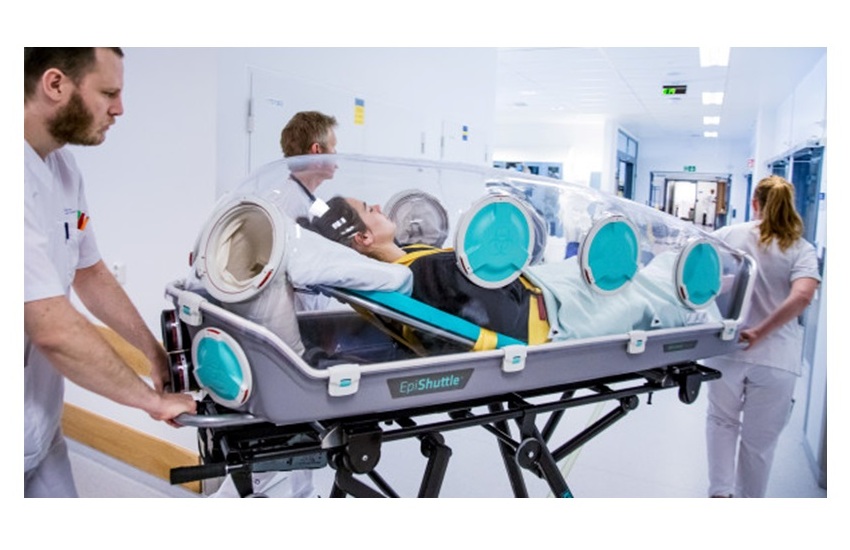Safe transport can become a bottleneck in the fight against the coronavirus
Pandemics require much complicated patient logistics. Safe transport of contagious patients may be essential in handling the epidemic
Patients must move safely across hospitals for treatment, between different hospitals for capacity and to hospitals for caretaking, without infecting others and without putting transport out of play from disinfection procedures.
We must be able to transport COVID-19 patients to where capacity is available, only then can we utilize the full capacity of the entire health care system and ensure treatment. Healthcare workers are making an admirable effort transporting patients and at the same time putting their own heath on the line, but if we have to disinfect all helicopters, aircrafts and ambulances after each transport, the whole system may collapse, Ellen Cathrine Andersen, CEO of EpiGuard says.
At EpiGuard, doctors and engineers have worked on solutions for transporting contagious patients for 5 years and have developed the EpiShuttle. The isolation stretcher ensures the safe transport of contagious patients and the safety of health professionals. At the same time, the isolation stretcher allows critical treatment of the patient along the way.
A prerequisite for the isolation and quarantine system to work is that ambulances can effectively transport patients in need of intensive care quickly to hospitals for treatment. It is still uncertain how extensive this transport will be, but if the ambulance needs disinfection after each transport, the ambulance will be out of operation for a long period, and the system will not work, Andersen explains.
Still, it is probably within the hospitals that the consequence of infection is most severe.
Safe transport inside hospitals is incredibly important. A hospital is the one place you find the highest concentration of people at risk, where infections will have serious consequences. It is important to isolate of both very vulnerable patients and the virus. The isolation stretcher can also be used with overpressure for transport of very vulnerable patients, ensuring that these patients are not inflicted with outside infection, Andersen says.
Transport is a security gap in emergency preparedness and contingency plans. When a patient is delivered from one medical team to another, from one hospital’s contingency plan to another, it may be unclear who is responsible for safety and infection control. Therefore, it is important to eliminate the risk of exposure during these transitions.
EpiGuard is currently experiencing a surge in demand for the EpiShuttle. With the numbers of confirmed cases increasing, the need for safe transport of patients is rising. Current demand witnesses a world in crisis. Now we scale up production and apply European Innovation Council to scale up even further. The EpiShuttle is NATOs stock listed and CE-marked as a class one medical device. We are prepared and ready to deploy, Andersen says.
EpiGuard is a Norwegian company established in 2015 providing better solutions for safe transportation of contagious patients. Our team of medical experts and engineers developed the EpiShuttle based on analysis and clinical first-hand experience from previous global epidemics. Our medical background ranges from intensive care, infectious diseases, internal medicine and anesthesiology, and transport medicine. EpiShuttle improves patient safety and care, the safety for health care providers, reduce costs and increase operational efficiency. Saving one – protecting everyone.
